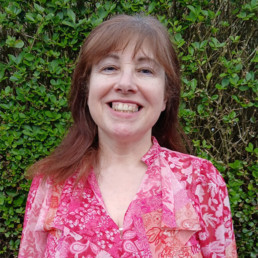
Written by Mirabel Lavelle
Mirabel is a qualified Teaching and Learning Coach, Creative Writing Lecturer, Allergy Awareness Advocate and Author of: Zeb, Jet and the Ice-Cream Calamity. An adventure story aimed at raising food allergy safety awareness. She is also the founder of: writebymirabel.co.uk – Crafting stories: where every voice counts and allergies matter. a website dedicated to the art of crafting stories, especially those that help raise awareness to disability, equity and inclusion.
I am a teacher and grandmother who loves stories. Two of my grandchildren carry auto-injector pens because of food allergies. One day, the older of the two asked me if I would write a story book about allergy. Hence, Jet, Zeb and the Ice-Cream Calamity.
I want to encourage the reader to learn about allergy, to become actively aware of how to safeguard and to include children with food allergies at social events such as Easter egg hunts, trick or treating, and parties without the fear of reaction to food – or worse still – anaphylaxis. I would like the reader to ask:
‘How can we plan a party that children with food allergies can safely enjoy?’
Allergic disease is a disease of the immune system, and it is the fastest growing disease among children in the UK. This condition impairs the sufferer on a day-to-day basis, in many different ways.
Sufferers cannot eat the same food as everyone else unless it has been prepared especially. This has substantial implications. For example, in school during lunchtimes a child may be asked to sit at a separate table because of their food allergies. Outside of school a child may be excluded from social events that centre around food because of a nervous adult.
The culture this creates is that if a child is different in any way, for example by having a dietary requirement, then society will exclude them. New studies are showing certain children, who have experienced anaphylaxis, to display allergy related anxieties and behaviours that are similar to PTSD.
This is why I want to raise food allergy safety awareness. I want to educate so that we can eradicate food cross contamination. This way we can significantly reduce allergy anxiety and promote inclusion at all times.
My story book features a relatable fox cub (Zeb) and playful puppy (Jet) as characters, rather than humans, because of the subject matter. Jet has a food allergy and when Zeb meets Jet, he learns how to be allergy safe aware. This exciting adventure encourages children to want to help Jet by telling others about how to keep him safe. It is an adventure that celebrates diversity, equity and inclusion.
I reinforced my message by creating a joyous song. The chorus shows how to significantly minimise food cross contamination. Children love music, the catchy chorus carries the central and crucial message of the book.
This book invites children to learn about allergy safeguarding by finding out about simple yet responsible behaviour around allergic kids. One example is not to leave wrappers, which may contain allergens, lying around but to bin them responsibly. My message to the reader is about building a society of caring individuals so that no one has to get sick because of the carelessness of others.
I added differentiated tasks to encourage readers to ask more questions about allergy. I want children to have fun whilst they learn. After all, it is through stories and through education and by putting ourselves in someone else’s shoes that we become more understanding of others.
Going into schools to deliver allergy safety events is a very rewarding experience for me because of the positive response from children and staff. They are providing me with a wealth of exciting ideas on how to continue taking my campaign of safe allergy inclusion, forward.
When I first wrote the book, I wanted it to be a key educational resource as well as an entertaining adventure. I aimed to provide schools and communities a point of reference that raises awareness and encourages people to want to know more about allergies and their impact. I needed to ensure that allergy sufferers are included in all activities that everyone their age enjoys. Since taking the book and the presentation into schools and libraries, it continues to inspire a range of immersive activities such as art projects, drama, puppet shows and animation.
This book highlights equity and the tasks that follow the story are focussed on finding ways that are fair and inclusive for Jet. The story affords time to explore feelings, such as Zeb’s feelings after Jet got sick. It creates an opportunity for discussion, for thinking, for empathising, and for bringing about positive change.
Useful Links:
The Natasha Allergy Research Foundation (narf.org.uk)
The Benedict Blythe Foundation Allergy & Education Foundation | Benedict Blythe Foundation
The Sadie Bristow Foundation: Don’t Be Afraid to Be Great

